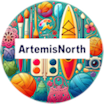My Insane Meno Brain – 09 – Unity and Hope: Standing with Women and the LGBTQ Community
Join me as I share thoughts on the U.S. election results, expressing empathy for women and the LGBTQ community, and a reminder that we can be our own heroes in challenging times
[powerpress]

